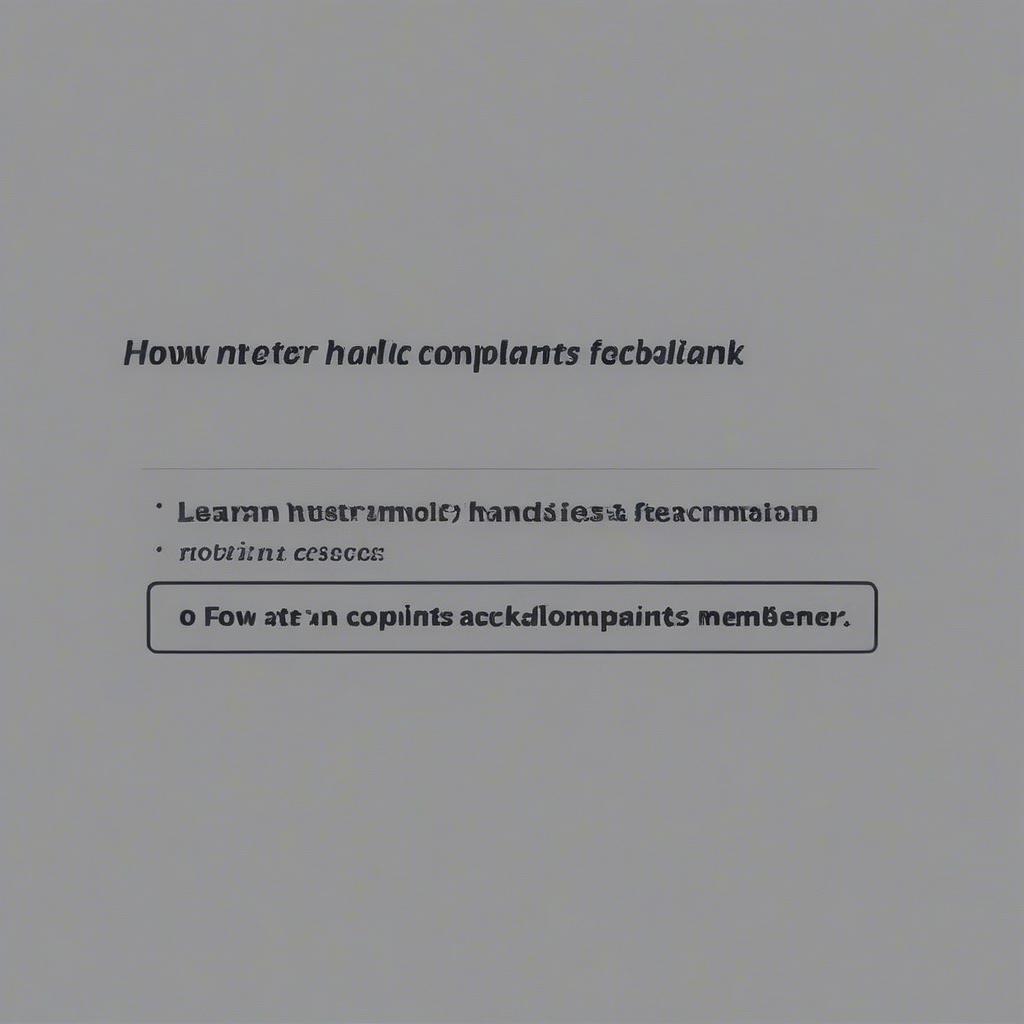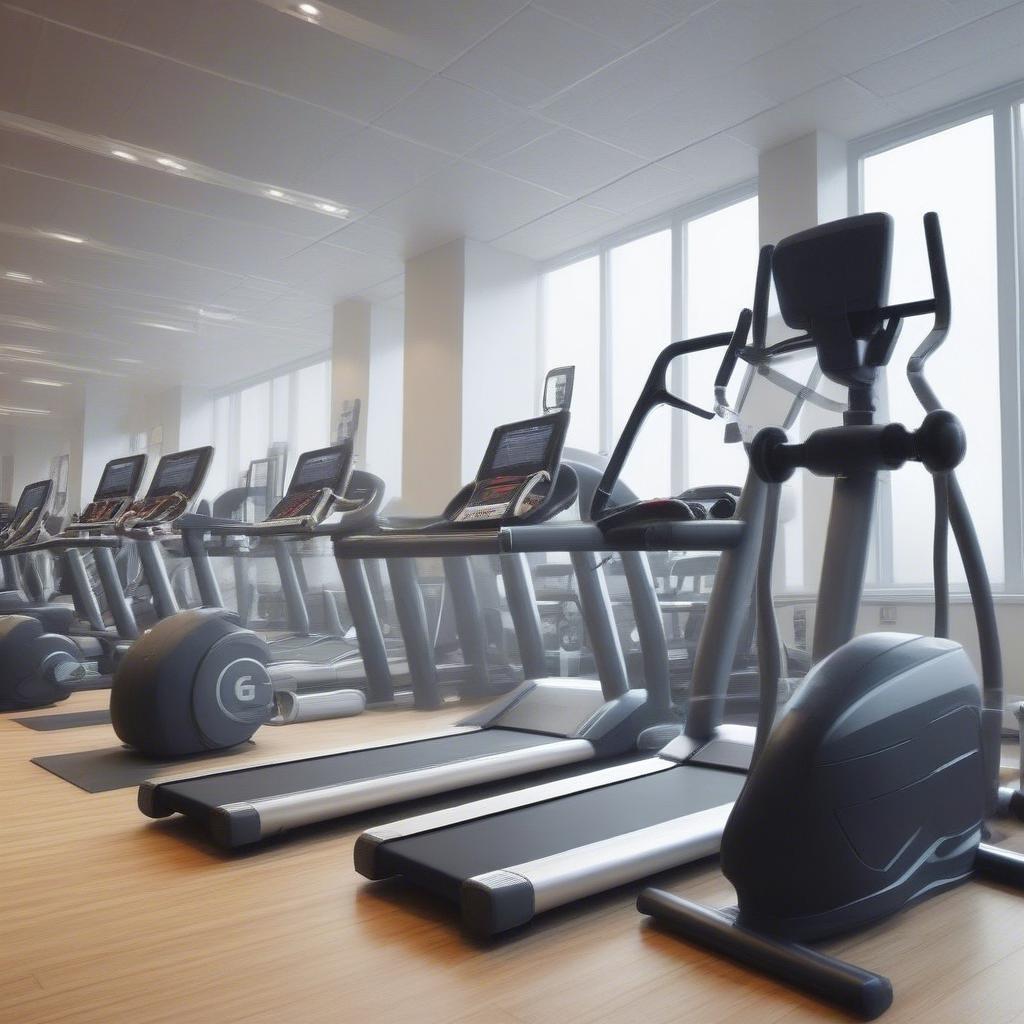
Why Gym Member Feedback Matters More Than You Think
Gym member feedback, both positive and negative, is the lifeblood of your fitness business. It’s not just about appeasing unhappy members; it’s about understanding what you’re doing well, where you’re falling short, and how you can continuously improve to create a thriving community. Think of it as a free roadmap to a better, more successful gym.
The Hidden Benefits of Listening
Ignoring member feedback is akin to driving with your eyes closed. You might get somewhere, but you’ll probably crash along the way. Here’s why actively seeking and responding to feedback is crucial:
- Increased Member Retention: A member who feels heard and valued is far more likely to stay with your gym. Addressing their concerns shows you care, fostering loyalty.
- Improved Services and Facilities: Constructive criticism highlights areas needing improvement, be it equipment, class schedules, or even staff training. This constant evolution keeps your gym relevant and attractive.
- Enhanced Reputation: Word-of-mouth referrals are gold in the gym industry. Happy members become your best advocates, spreading positive experiences and attracting new clientele.
- Reduced Negative Reviews: Addressing complaints proactively prevents them from escalating into damaging online reviews.
- Deeper Member Relationships: Engaging with member feedback helps build stronger connections, turning them from customers into a community.
Understanding the Different Types of Gym Member Feedback
Not all feedback is created equal. To effectively address it, you need to understand the different forms it can take.
Direct Feedback
This is the most obvious form and includes:
- Verbal Complaints: Directly expressed to staff members, whether in person or over the phone.
- Written Complaints: Submitted via forms, emails, or suggestion boxes.
- Surveys and Questionnaires: Collected through structured feedback initiatives.
Indirect Feedback
This can be trickier to identify but offers valuable insights:
- Social Media Mentions: Comments, tags, or direct messages on your social platforms.
- Online Reviews: Reviews left on platforms like Google, Yelp, or Facebook.
- Member Body Language: Frustration, disinterest, or dissatisfaction expressed nonverbally.
- Changes in Attendance: A sudden drop in participation can signal underlying problems.
- Churn Rates: The number of members who cancel their memberships.
Positive vs. Negative Feedback
Both positive and negative feedback offer different opportunities:
- Positive Feedback: Use this to identify what you’re doing well, motivate your team, and highlight your strengths in marketing materials.
- Negative Feedback: Use this as a learning opportunity, identifying areas for improvement and resolving issues that are impacting member satisfaction.
Implementing a Proactive Gym Member Feedback System
Waiting for complaints to roll in isn’t a sound strategy. You need to actively solicit feedback to get a pulse on your members’ experiences.
Step 1: Choose the Right Feedback Channels
Offer various avenues for members to share their thoughts:
- Suggestion Boxes: Still a simple and anonymous option for those uncomfortable with direct interaction.
- Online Forms: Use a website or app-based form for convenient and detailed feedback collection.
- Email: Provide a dedicated email address for member concerns.
- Social Media Monitoring: Actively monitor and respond to mentions and messages on all platforms.
- Surveys: Conduct periodic member satisfaction surveys using a mix of multiple-choice and open-ended questions.
- "Chat with Staff" Opportunities: Encourage members to share their thoughts directly with staff during informal check-ins.
Step 2: Train Your Staff to be Exceptional Listeners
Your staff is your frontline. They need the skills to:
- Actively Listen: Pay full attention, maintain eye contact, and avoid interrupting.
- Empathize: Show genuine understanding of the member’s feelings, using phrases like "I understand" and "I can see why you’d feel that way."
- Be Patient: Allow the member to fully express their concerns without feeling rushed.
- Remain Calm: Even when confronted with a heated complaint, maintain a professional and composed demeanor.
- Avoid Defensiveness: Focus on finding a solution, not assigning blame.
Step 3: Create a Structured Feedback Process
A well-defined process ensures all feedback is addressed fairly and efficiently:
- Acknowledgment: Immediately acknowledge receipt of the feedback, whether it’s a verbal complaint, online review, or survey response. This lets members know their thoughts were heard.
- Investigation: Carefully investigate the issue and gather all relevant information. Don’t jump to conclusions; dig deeper.
- Resolution: Develop a solution tailored to the specific issue. This might involve fixing equipment, adjusting schedules, offering a partial refund, or just a sincere apology.
- Follow-Up: Communicate the resolution to the member, letting them know what steps were taken. This shows them that their concerns were taken seriously.
- Documentation: Keep a record of all complaints and resolutions. This helps identify recurring issues and track progress over time.
Step 4: Regularly Review and Analyze Feedback Data
Don’t just collect feedback; analyze it for trends and patterns:
- Identify Recurring Complaints: Are the same issues being raised repeatedly? This signals a systemic problem that needs attention.
- Analyze Trends: Are there certain times of the day or week that are generating more complaints? Are there specific staff members who seem to be involved in more issues?
- Measure Satisfaction: Use surveys to track overall member satisfaction over time. Are improvements being made?
- Benchmark Against Industry Standards: Compare your satisfaction levels with those of other gyms in your area.
- Prioritize Action: Focus on the issues that have the greatest impact on member satisfaction.
Practical Strategies for Handling Common Gym Member Complaints
While specific complaints vary, some issues pop up more frequently than others. Here are a few common examples and how to handle them:
1. Overcrowded Facilities
- Complaint: "The gym is always too crowded, I can never get on the equipment I want."
- Solution:
- Adjust Class Schedules: Offer classes at off-peak times.
- Implement Equipment Rotation: Encourage members to share equipment.
- Consider Expanding: If possible, invest in more equipment or expand your facility.
- Track Peak Times: Use data to determine the busiest times and adjust schedules accordingly.
2. Equipment Issues
- Complaint: "The equipment is always broken or in disrepair."
- Solution:
- Regular Maintenance: Implement a routine maintenance schedule to ensure equipment is in good working order.
- Prompt Repairs: Address broken equipment promptly. Have a system in place to quickly fix or replace broken items.
- Invest in High-Quality Equipment: Prioritize quality over cost; durable equipment minimizes breakdowns.
- Communicate Repairs: Inform members when repairs are being made.
3. Cleanliness Concerns
- Complaint: "The gym is always dirty."
- Solution:
- Increase Cleaning Frequency: Implement more frequent cleaning schedules, particularly during peak hours.
- Provide Cleaning Supplies: Offer members readily available wipes and sanitizers for personal use.
- Staff Training: Train staff on cleanliness procedures and member expectations.
- Encourage Member Cooperation: Post clear signs asking members to help keep the facility clean.
4. Poor Customer Service
- Complaint: "The staff is rude or unhelpful."
- Solution:
- Customer Service Training: Invest in regular customer service training for all staff members.
- Lead by Example: Demonstrate exceptional customer service at the management level.
- Address Staff Issues: Promptly address any complaints about specific staff members and correct problematic behavior.
- Recognize and Reward Good Performance: Highlight employees who consistently go above and beyond.
5. Class Scheduling Issues
- Complaint: "The classes are not convenient for my schedule" or "The classes I want to take are always full"
- Solution:
- Analyze Member Needs: Use surveys and data to identify member preferences for class schedules.
- Offer a Variety of Classes: Provide a diverse range of classes to appeal to different needs and preferences.
- Manage Class Capacities: Consider a booking system to manage class sizes effectively.
- Consider Additional Time Slots: Evaluate the feasibility of adding new class times during peak or off-peak hours.
The Art of Responding to Negative Feedback
Responding to negative feedback is where your customer service skills really shine. This is how you turn a potentially negative experience into a positive one.
Acknowledge and Empathize
- Don’t: Ignore the feedback, dismiss it, or get defensive.
- Do: Express empathy and acknowledge their feelings. Say something like, "I’m sorry to hear you’re having this experience," or "I understand your frustration."
Take Responsibility
- Don’t: Make excuses or blame others.
- Do: Take ownership of the problem, even if you don’t think you are at fault. Say something like, "We’re taking this issue seriously and want to make it right."
Offer a Solution
- Don’t: Just say "sorry" without any action.
- Do: Provide a clear plan of action to address the issue. This might involve a refund, a free class, a small discount, or a promise to follow up with them personally.
Be Timely
- Don’t: Let the feedback sit unaddressed for days or weeks.
- Do: Respond promptly, ideally within 24 hours.
Be Genuine and Personal
- Don’t: Use canned or generic responses.
- Do: Personalize your response and let the member know you value their feedback and appreciate them as a member.
Follow Up
- Don’t: Forget about the issue once you’ve responded.
- Do: Follow up to ensure the member is satisfied with the resolution.
How Learn Business Supports Your Business
Learn Business understands the complexities of running a successful gym. We provide businesses, including gyms, with a plethora of resources, guidance, and ready-to-use templates to elevate their operations. Here’s how we can help you navigate the challenges of member feedback and build a thriving fitness community:
Customized Templates for Feedback Collection
We offer a range of templates to streamline the feedback process. These include:
- Member Feedback Forms: Professionally designed templates for both online and print use, helping you gather comprehensive feedback.
- Survey Templates: Ready-to-use survey templates for member satisfaction, class feedback, and more.
- Complaint Tracking Templates: To easily document complaints, resolutions, and track recurring issues.
Staff Training Resources
We provide training materials that enable your staff to enhance their communication and customer service skills:
- Customer Service Training Modules: Developed by experts, these modules cover key principles for delivering exceptional service.
- Active Listening Guides: Simple yet effective guides to equip your team with the skills to actively listen to members.
- Conflict Resolution Guides: Providing a step-by-step process for resolving conflict effectively and professionally.
Actionable Strategies and Guidance
Our resources will give you a deeper understanding of how to turn feedback into actionable strategies:
- Strategies to address complaints: Practical guidance on how to handle various types of complaints and turn them into opportunities for growth.
- Data Analysis Techniques: Helping you uncover hidden insights within feedback data, so you can make informed decisions.
- Proactive Feedback Systems: Providing the structure to implement a system that continuously helps you monitor and improve member satisfaction.
Personalized Support and Consulting
Our team can support you in implementing these strategies:
- Personalized Business Coaching: Expert advice tailored to the unique needs of your gym.
- Resource Customization: Assistance in tailoring our resources to align with your specific brand and business goals.
- Ongoing Support: Access to ongoing support for continued growth and success.
Learn Business is more than just a provider of templates and resources; we are a partner committed to supporting your gym’s journey towards excellence.
The Power of Continuous Improvement
Handling member complaints and feedback effectively isn’t a one-time task; it’s a continuous process. By embracing feedback, taking proactive steps to improve, and investing in your staff and resources, you can create a gym that not only meets but exceeds the expectations of your members. Remember, a happy member is your best advertisement.



Leave a Reply